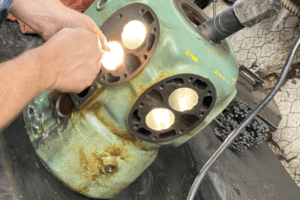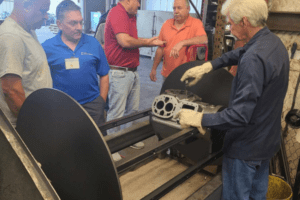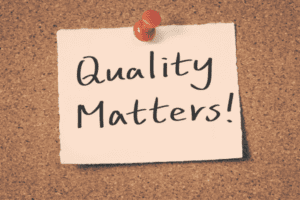

Air quality is something most people don’t think about much until it goes bad.
By the time poor indoor air quality has noticeable effects, it has probably already deteriorated a long way. According to the Environmental Protection Agency, indoor air can be many times more polluted than air outside. Risks increase in older buildings and those with higher occupancy.
What do you think of when you think of poor air quality?
What comes to mind for most people is the smokestack of a factory. These are known as point sources of pollution, and their impact is significant. But unless you are within some 50 miles of a point pollution source, your biggest risk for air pollution is very different – and much more subtle.
How does indoor air pollution get so much worse than outdoor air pollution?
How Indoor Air Pollution Might Be Plaguing Your Business
Indoor air pollution can arise as a natural result of certain long-term factors within your facility.
Many older buildings have narrower ductwork than what would be installed for new construction today. This limits airflow and makes it more crucial to pursue regular HVAC maintenance. Operating under these conditions, HVAC air filters must work harder to clean out a smaller volume of flowing air.
Whatever the underlying factors, air pollution can significantly reduce comfort and efficiency.
From multifamily residences to office complexes, indoor air pollution is associated with a variety of issues:
-
Higher levels of absenteeism for employees exposed to polluted areas, especially small, cramped offices
-
Greater likelihood of complaints from the public, from apartment tenants to customers visiting your site
-
More use of sick time arising from headaches, sinus problems, respiratory issues, and other maladies
-
Overall struggles with concentration and productivity not readily linked to other underlying causes
Elders and those with existing respiratory or allergy conditions are more likely than others to have noticeable symptoms due to low indoor air quality. However, the effects are by no means limited to these groups: No one is immune. When indoor air pollution is not mitigated, what was once acute can become chronic.
At that point, you may have a full-blown case of Sick Building Syndrome on your hands.
Indoor Air Pollution and Sick Building Syndrome
Sick Building Syndrome is a general term for a situation in which a building’s tenants or employees experience symptoms of illness that resolve immediately or soon after leaving the built environment. For example, a worker might feel fine in the morning, experience symptoms at work, and feel better during the drive home.
When Sick Building Syndrome happens, it does not necessarily mean that 100% of the people who use the building will encounter symptoms, or that they will all have the same symptoms. That said, symptoms are frequent, widespread, and recurring – typically, enough to be a topic of conversation and a drain on morale.
Cough, tightness in the chest, fever, chills, and muscle aches are just a few of the most common indicators.
For a long time, Sick Building Syndrome was believed to be mainly psychosomatic in origin. Some cases of it do remain mysterious. But more experts are coming to the conclusion that chronic exposure to polluted indoor air may be the driving factor in some or even the majority of cases.
Pollutants could include:
-
Mold, bacteria, and viruses
-
Combustion gas from furnaces
-
Cleaning product chemicals
-
Volatile Organic Compounds (VOCs) used in certain paints and coatings
-
Carbon monoxide, radon, and other hazardous gasses
-
Tar, nicotine, and other components of cigarette smoke
Relatively few of these are frequently associated with serious harm to humans at incidental levels of exposure. But over a period of months or years, the concentration of pollutants and airborne irritants can become so serious that it impacts most of the people who inhabit the structure on a regular basis.
The Fastest Way to Achieve an Immediate, Positive Change in Indoor Air Composition
Rigorous maintenance and cleaning procedures are valuable assets for managing indoor air quality – but once a problem has developed, they are often not enough. A complete, end-to-end cleaning or comprehensive, long-term plan to widen ductwork may be time-consuming and costly.
But there is a solution: Replace your commercial HVAC system’s compressor.
Along with your HVAC air filters, the compressor is the biggest contributor to system quality. It helps you drive larger volumes of air through your system more efficiently, reducing your cost of ownership and the total number of on-off cycles needed to meet your temperature control goals.
If indoor air quality is an immediate concern, a remanufactured commercial compressor helps. Remanufactured compressors have been completely re-engineered for excellent performance. You can enjoy results comparable to an all-new compressor unit at deep savings and deploy your new unit weeks sooner.
That’s the best way to clear the air while maintaining your budget.












